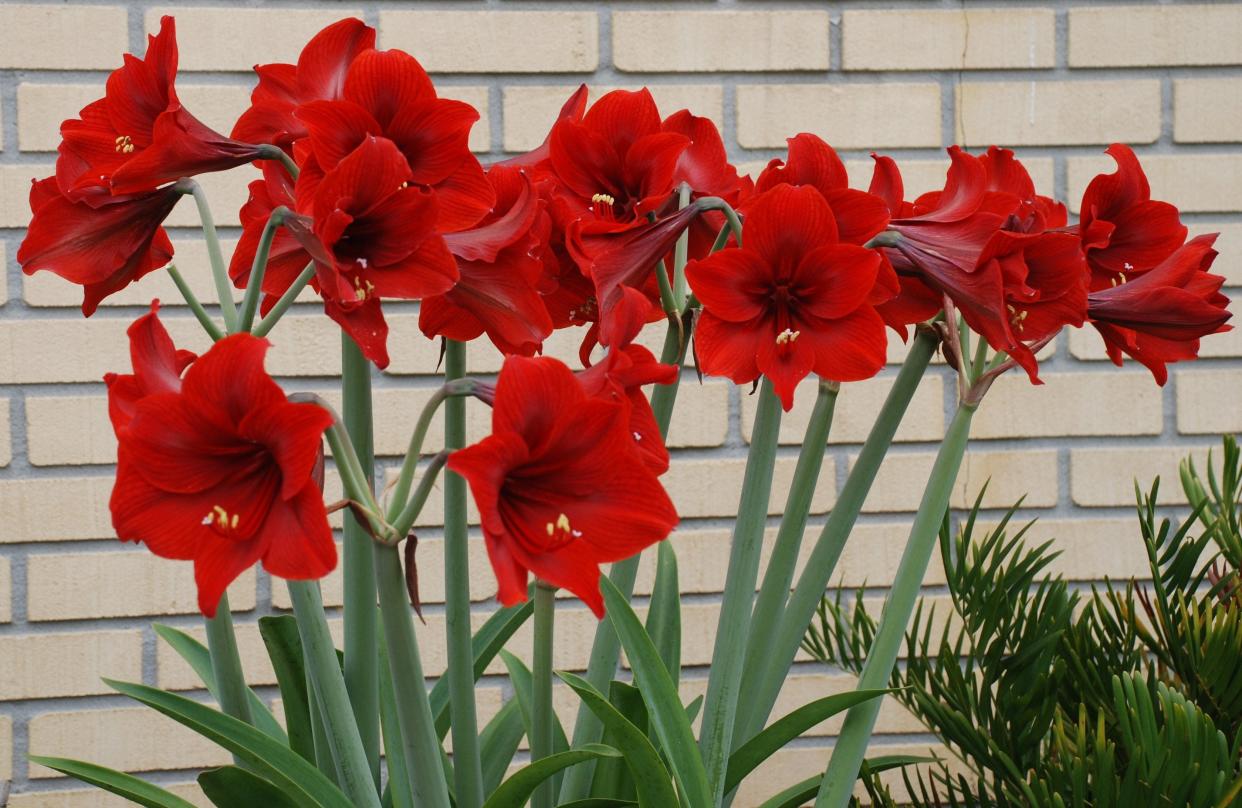Plant these bulbs, not those in your Florida garden

Have you been getting glossy bulb catalogs in the mail? Advertisements for bulbs on social media? See tulip, daffodil, and hyacinth bulbs for sale at national chain stores?
Those bulbs need a long winter chill and a cool spring to do well. We just do not have those conditions in Florida. In Northeast Florida, we get a handful of cold nights and our spring gets warm fast. The U.S. Department of Agriculture has just updated its 2023 USDA Plant Hardiness Zone Map (planthardiness.ars.usda.gov), where you can enter your zip code and see your new hardiness zone. Average temperatures have been getting warmer, but we can still have frosts and freezes. Most of Florida is now zone 9A or warmer, except for part of the panhandle.
What to know about planting northern spring bulbs in your Florida garden
If you really want to grow northern spring bulbs, you’ll need a separate refrigerator to chill them in. They need 8-16 weeks of temperature below 50 degrees and above freezing. They cannot be in the same refrigerator as your fruits and vegetables, which emit ethylene gas that causes the bulbs to rot.
In Florida, we can have different bulbs growing and blooming year-round. Get the paperwhite narcissus bulbs from the national chains. They are being sold for forcing, but you can plant them directly into your garden. They’ll bloom around Christmastime each year. There are a few more small flowered narcissus species and hybrids that will grow and bloom in zone 9. Check the catalog for zones and growing conditions. California zone 9 and Florida zone 9 are different. (I wrote a previous Times-Union article about this.)
Amaryllis bulbs are available now including some of the fancy hybrids at independent local plant nurseries. They have had an early dormancy for holiday bloom in pots, but normally bloom in your garden in the spring.
Many bulbs can be planted year-round in Florida, especially if they are growing in pots. Summer bloomers and tropical bulbs are best planted in the spring, to protect tender new growth from frosts and freezes.
Most bulbs like well-drained moist hummus soil in sun or light shade. Some of the old-fashioned crinum bulbs will grow and thrive in poor sandy soil. There are also bulbs that like wet soil.
Bulbs that work best in Florida
Following are some of the bulbs or tubers, corms and rhizomes that you can grow in Florida: achimenes, agapanthus, amaryllis, amazon lily (Eucharis grandiflora), blackberry lily, blood lily, caladium, calla lily, canna, crinum lilies, crocosmia, dahlia, daylily, Easter lily, elephant ear, gingers (alpinia, curcuma, costus, globba, hedychium), gladiolus, hurricane lily (Lycoris), iris (African, walking, Louisiana) Kaffir lily (Clivia miniate), oxblood lily, rain lily, Scilla madrensisis, society garlic, and voodoo lily. Native bulbs include Crinum americanum, Zaphyranthes atamasca, and Hymenocallis latifolia. Gloriosa lily and several types of elephant ear-type plants are invasive. There are lots of bulbs to choose from to grow in Florida and several would make good gifts for the gardener.
Brenda Daly is a Master Gardener Volunteer with the Duval County Extension Service and the University of Florida/IFAS. For gardening questions, call the Duval County Extension Office at (904) 255-7450 from 9 a.m. to noon and 12:30 to 3:30 p.m. Monday-Friday and ask for a Master Gardener Volunteer.
This article originally appeared on Florida Times-Union: What bulbs should I plant in Florida? And when should I plant them?

